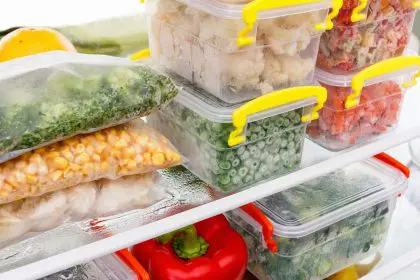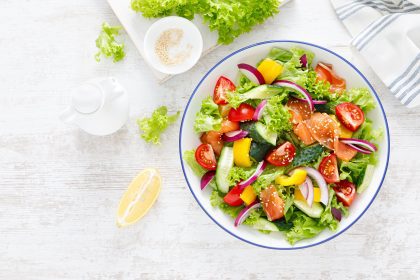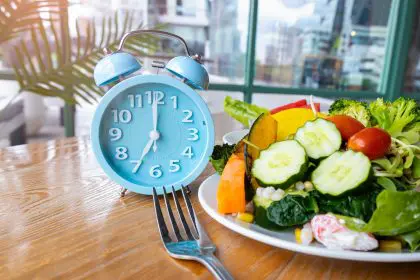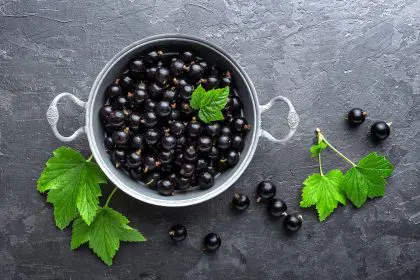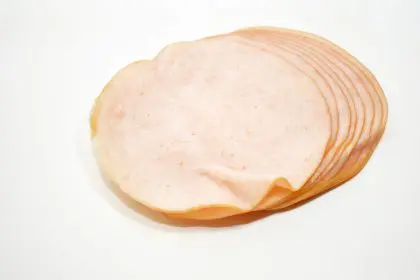The connection between diet and inflammation has received significant attention in nutrition research, with certain foods clearly demonstrating anti-inflammatory properties while others promote inflammatory responses. However, less discussed but equally important is how cooking methods themselves can dramatically alter the inflammatory potential of foods, sometimes transforming a nutritious ingredient into one that may contribute to inflammation.
Recent advances in food science reveal that cooking techniques significantly impact not just the flavor and texture of foods but also their nutritional composition and bioactive compound profiles. Heat, water, pressure and even cooking vessel materials can preserve, destroy or transform the very compounds that give foods their anti-inflammatory properties.
Understanding these processes offers a practical approach to enhancing the health benefits of your diet without necessarily changing which foods you eat. Here are seven evidence-based cooking methods that can help maximize the anti-inflammatory potential of your meals, supported by current research in nutritional science and food chemistry.
Low-temperature water methods
Gentle cooking with water at lower temperatures preserves many heat-sensitive nutrients while minimizing the formation of pro-inflammatory compounds that can develop with high-heat methods. This approach proves particularly valuable for vegetables rich in water-soluble anti-inflammatory compounds.
Research published in the Journal of Agricultural and Food Chemistry demonstrates that quick steaming preserves up to 90% of the glucosinolates in cruciferous vegetables like broccoli and Brussels sprouts, compared to just 50-60% retention with boiling. These sulfur-containing compounds help modulate inflammatory responses and support the body’s natural detoxification pathways. The key difference lies in minimal water contact and shorter cooking times, which prevent these beneficial compounds from leaching into cooking water.
Similarly, studies show that gentle poaching of fish and poultry at temperatures below 180°F preserves the integrity of their anti-inflammatory omega-3 fatty acids while minimizing oxidation that can occur at higher temperatures. This gentle approach also prevents the formation of advanced glycation end products (AGEs), compounds known to trigger inflammatory responses that form readily during high-heat cooking methods like grilling and frying.
Pressure cooking benefits
Pressure cooking represents a surprisingly effective method for preserving and sometimes even enhancing the anti-inflammatory compounds in foods. The sealed environment combined with shorter cooking times creates unique conditions that protect many beneficial components.
Research in Food Chemistry demonstrates that pressure cooking legumes like beans and lentils reduces their phytic acid and lectin content, compounds that can contribute to digestive inflammation in sensitive individuals, while preserving their beneficial fiber and resistant starch. The high-pressure environment also makes certain minerals more bioavailable by breaking down binding molecules that typically reduce absorption.
Particularly impressive is pressure cooking’s effect on tomatoes and other lycopene-rich foods. Studies show that pressure-cooked tomato sauce contains up to 30% more bioavailable lycopene than conventionally simmered versions. This powerful antioxidant helps neutralize free radicals that contribute to inflammatory processes. The combination of high pressure, minimal water exposure and shorter cooking times creates an ideal environment for preserving and enhancing these beneficial compounds.
Strategic spice addition
The timing and method of adding spices to dishes significantly impacts their anti-inflammatory potential, with research showing that certain approaches preserve or even enhance their beneficial compounds while others diminish their effects.
Studies from the University of California demonstrate that fat-soluble anti-inflammatory compounds in turmeric, ginger and other spices become more bioavailable when briefly heated in healthy fats like olive oil before adding other ingredients. This “blooming” technique can increase curcumin absorption, turmeric’s primary anti-inflammatory compound, by up to 2000% compared to simply adding the spice to water-based dishes.
However, timing proves critical for heat-sensitive compounds. Research shows that adding ground black pepper, which contains piperine that enhances absorption of many spices, toward the end of cooking preserves its potency better than adding it early in the process. Similarly, adding fresh herbs like basil and cilantro off the heat rather than cooking them preserves their volatile anti-inflammatory compounds that would otherwise evaporate or degrade with prolonged heat exposure.
Fermentation processes
Fermentation, one of humanity’s oldest food preparation methods, transforms ingredients through beneficial bacterial action, often enhancing their anti-inflammatory properties while creating new bioactive compounds not present in the original foods.
Research published in the Journal of Medicinal Food demonstrates that fermentation increases the antioxidant capacity of many foods by up to 60%, with corresponding increases in their ability to suppress inflammatory markers in laboratory studies. Fermented cabbage, for example, contains isothiocyanates that show stronger anti-inflammatory activity than the compounds found in raw cabbage. The fermentation process activates enzymes that convert precursor molecules into more bioactive forms.
Beyond creating new beneficial compounds, fermentation also reduces potentially inflammatory components in many foods. Studies show that properly fermented sourdough bread contains significantly lower levels of FODMAPs and gluten peptides associated with inflammatory responses compared to conventional bread. The process also increases mineral bioavailability by reducing phytic acid content, a compound that can bind minerals and prevent absorption while potentially irritating the digestive tract in sensitive individuals.
Smart sautéing techniques
How you approach the common cooking method of sautéing can dramatically affect the inflammatory potential of your meal. Small modifications to traditional approaches yield significant benefits without sacrificing flavor or convenience.
Research from the European Journal of Nutrition shows that sautéing vegetables in extra virgin olive oil creates a protective matrix around their beneficial compounds, enhancing the absorption of fat-soluble nutrients while minimizing oxidative damage from heat. The monounsaturated fats and polyphenols in olive oil remain relatively stable at medium temperatures, creating a protective environment for more delicate compounds in the vegetables.
Temperature control represents another critical factor. Studies demonstrate that keeping pan temperatures below 320°F when sautéing dramatically reduces the formation of acrylamide and heterocyclic amines, pro-inflammatory compounds that form readily at higher temperatures. Practical approaches include using lower heat settings, adding small amounts of water or broth to prevent overheating, and avoiding browning of starchy foods, which indicates significant acrylamide formation is occurring.
Marination strategies
Marinating foods before cooking can significantly reduce their inflammatory potential while enhancing flavor, with certain ingredients providing particularly notable protective effects against the harmful compounds formed during cooking.
Research published in the Journal of Food Science shows that marinating meats in mixtures containing acidic ingredients like lemon juice, vinegar or yogurt before grilling or roasting can reduce the formation of advanced glycation end products (AGEs) by up to 50%. These compounds, formed when proteins and sugars react under high heat, trigger inflammatory responses in the body and accumulate with chronic consumption.
Particularly effective are marinades containing herbs and spices with high antioxidant content. Studies demonstrate that rosemary, oregano and garlic marinades can reduce the formation of heterocyclic amines by up to 80% during high-heat cooking methods. The antioxidants in these ingredients neutralize free radicals during the cooking process, preventing them from damaging the food’s proteins and creating inflammatory compounds. Even a brief 30-minute marination provides significant protective effects, with optimal benefits occurring after 2-4 hours.
Cold preparation methods
Some ingredients deliver their maximum anti-inflammatory benefits when consumed raw or prepared using cold methods that preserve their most delicate compounds. This approach proves particularly valuable for certain foods whose beneficial components degrade quickly with any heat application.
Research in the Journal of Agricultural and Food Chemistry shows that allicin, the primary anti-inflammatory compound in garlic, forms only when raw garlic is crushed or chopped and then allowed to rest for 10-15 minutes before consumption or further preparation. Heat rapidly degrades this compound, reducing its availability. A practical approach involves preparing garlic first, allowing it to rest, and adding it toward the end of cooking or using some raw in dressings and sauces.
Cold-pressed oils represent another category where heat avoidance preserves benefits. Studies demonstrate that extra virgin olive oil, flaxseed oil and walnut oil contain significantly higher levels of anti-inflammatory polyphenols and omega fatty acids when cold-pressed compared to heat-extracted versions of the same oils. These delicate compounds degrade quickly with heat, making these oils ideal for dressings and finishing dishes rather than primary cooking oils.
While these seven approaches offer valuable strategies for enhancing the anti-inflammatory potential of your diet, their practical implementation requires balancing several considerations. Cooking methods should account not only for nutritional optimization but also food safety, personal preference and practical constraints like time and equipment availability.
Combining methods often yields the greatest benefits. For example, marinating vegetables in an olive oil, lemon and herb mixture before brief steaming or low-temperature roasting provides multiple layers of protection for their beneficial compounds. Similarly, adding fermented foods as accompaniments to cooked meals can help balance any inflammatory potential from the cooking process itself.
It’s also worth noting that individual responses to foods and cooking methods can vary significantly. What triggers inflammatory responses in one person may not affect another, due to genetic variations, gut microbiome differences and overall health status. Paying attention to your body’s responses to different cooking methods can provide valuable personalized information beyond general recommendations.
The relationship between cooking methods and inflammation represents an exciting frontier in nutritional science, bridging traditional culinary wisdom with modern biochemical understanding. As research in this area continues to evolve, we gain more tools for using the kitchen as a place not just for creating delicious food but for optimizing its health-supporting properties.
By making thoughtful choices about how we prepare foods, not just which foods we select, we can significantly enhance their anti-inflammatory potential. These approaches don’t require exotic ingredients or specialized equipment, just a willingness to adapt cooking techniques based on an understanding of how they affect the complex chemistry of our food and, ultimately, our bodies.


